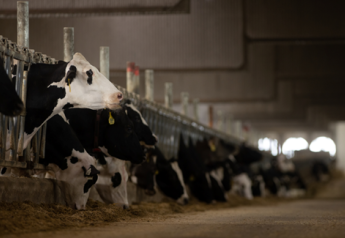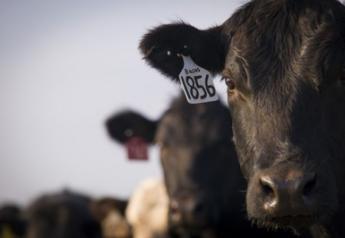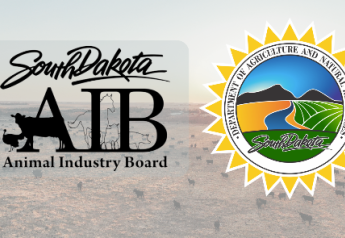Grass Versus Grain: Question 8

By: John Maday
Drovers recently received an inquiry from a college student conducting research for a public-health class project. She sent a list of questions regarding the relative merits of finishing cattle on grass versus grain-based rations. Her questions, while somewhat biased, reflect common misperceptions of grain feeing and the kinds of question consumers are asking. For that reason, we have adapted the questions and answers into this article, to serve as possible “talking points” for our readers as you encounter similar questions from the public.
We’ll be posting the 13 questions, along with our answers, over the next couple weeks. Here is question 8:
Student
Can feeding cattle corn be a sustainable process?
Drovers
This is a matter of considerable debate, with opinions depending largely on how someone defines sustainability. In my opinion, efficiency is a key component of sustainability, and finishing cattle on grain-based rations improves overall efficiency. We have a limited number of arable acres available to agriculture in the United States and globally, and that number continues to shrink while the human population increases.
Consider that the average per-acre corn yield in the U.S. is about 160 bushels. With a bushel of corn weighing about 52 pounds, that is about 8,320 pounds of corn from one acre. Cattle in a feedlot convert feed at about a six-to-one ratio. So, one acre of corn translates to about 1,387 pounds of weight gain. In contrast, one acre of highly productive Midwest pasture might produce about 4,000 pounds of forage (on a dry-matter basis) over one good growing season. Typically, cattle can only utilize about 75 percent of the forage in a pasture, so that’s about 3,000 pounds of available forage. Cattle on pasture convert feed at about a 12-to-1 ratio, so the pasture would produce about 250 pounds of weight gain per acre. Pastures in the arid West, where many of our cattle are raised, are far less productive than this example.
Kim Stackhouse Lawson, PhD, conducts sustainability research for the National Cattlemen’s Beef Association. As a contractor to the beef checkoff, NCBA recently completed the largest life cycle assessment (LCA) ever to be conducted on beef. The Beef Industry Sustainability Assessment is the first step in demonstrating beef’s path of continuous improvement. The assessment, recently certified by the NSF international, showed that in six years the beef industry has improved its overall sustainability by 5 percent and its social and environmental sustainability by 7 percent.
While on the faculty at Washington State University, animal scientist Jude Capper, PhD, conducted several studies on the sustainability of beef production. In one study, she compared the environmental impact of conventional (grain finished), natural and grass-fed beef production systems. She found that increased productivity in the conventional system reduced the cattle population required to produce a given volume of beef. The conventional system required 56.3 percent of the animals, 24.8 percent of the water, 55.3 percent of the land and 71.4 percent of the fossil fuel energy required to produce an equal volume of beef in the grass-finished system. The carbon footprint per volume of beef was lowest in the conventional system, intermediate in the natural system and highest in the grass-finished system.
See question 7 from this series here.







